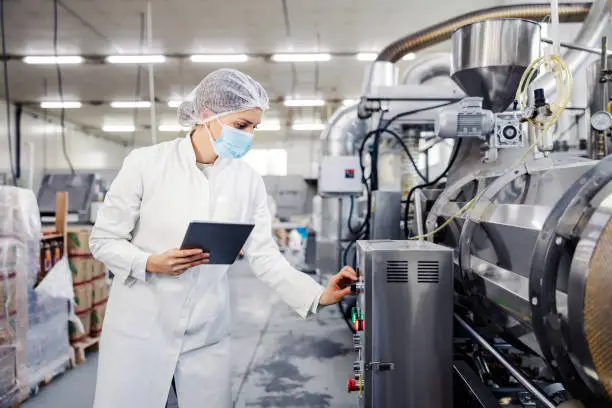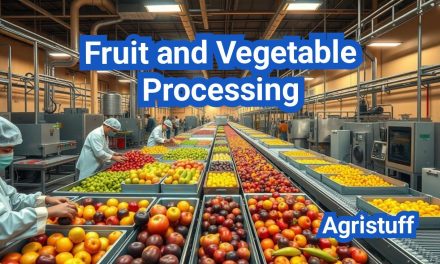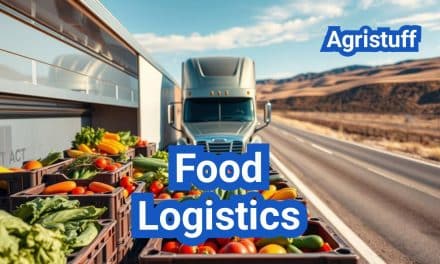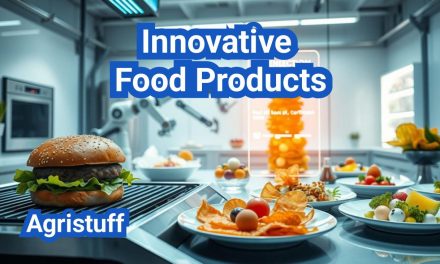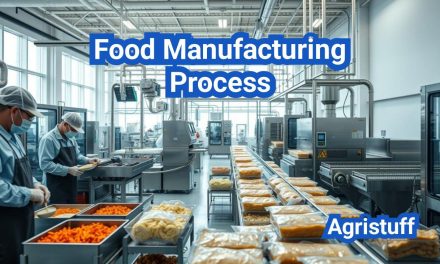As we progress through 2025, the food industry continues to evolve at an unprecedented pace. This transformation is fueled by technological innovations, environmental concerns, shifting consumer preferences, and regulatory advancements. Key trends such as AI-driven supply chains, sustainable farming, plant-based nutrition, health-conscious consumer choices, and updated industry policies are shaping the future of food. This article explores these crucial developments and their impact on the global food landscape.
Technological Advancements Reshaping the Food Industry
Technology is revolutionizing the food industry in 2025, introducing innovative solutions that enhance efficiency, safety, and convenience. From AI-driven food production to automated delivery systems, the industry is witnessing a digital transformation.
One of the most notable advancements is AI-powered food processing. Smart robots are now handling food preparation with precision, from chopping vegetables to crafting delicate sushi rolls. These intelligent machines address labor shortages while maintaining high-quality standards in commercial kitchens.
Another major shift is drone food delivery. Companies like Uber Eats and DoorDash have incorporated drone technology to ensure faster, cost-effective meal deliveries. What once seemed futuristic is now a reality, enhancing the convenience of food consumption.
Precision agriculture is also making significant strides. With the integration of IoT and AI, farmers utilize satellite imagery and real-time data analytics to optimize crop yields, manage pests, and improve irrigation efficiency. Additionally, blockchain technology is increasing transparency in food sourcing, reducing fraud, and ensuring food safety.
The rise of 3D food printing is also transforming the culinary world. Consumers can now enjoy personalized meals tailored to their dietary needs and preferences, promoting healthier eating habits.
Meanwhile, lab-grown meat is gaining traction as a sustainable and ethical alternative to traditional livestock farming. This innovation replicates the taste, texture, and nutritional value of conventional meat while significantly reducing environmental impact.
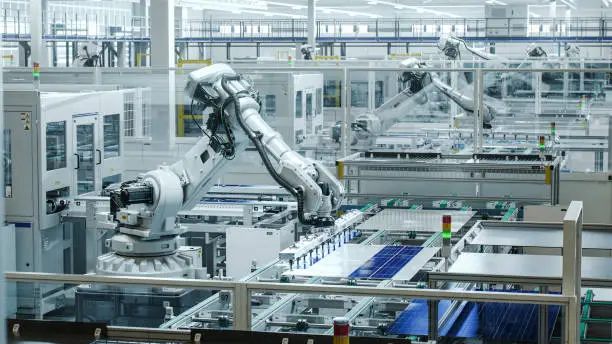
Sustainability in the Food Industry
With environmental sustainability taking center stage, the food industry is adopting greener practices to reduce its ecological footprint.
Vertical farming is a game-changer, especially in urban areas. By utilizing stacked layers in controlled environments, this method minimizes land and water usage while cutting transportation costs. From skyscrapers in New York to warehouses in Tokyo, vertical farms are becoming the norm.
Additionally, hydroponic and aquaponic farming are gaining popularity. These soil-free techniques use nutrient-rich water, reducing water consumption by up to 90% while promoting faster crop growth without chemical fertilizers.
The shift toward plant-based diets continues to accelerate. No longer just a niche trend, plant-based foods—ranging from soy protein isolates to innovative meat alternatives—are now widely accepted due to their health benefits and lower environmental impact.
Algae-based foods are emerging as a promising solution to food sustainability. Packed with protein and essential nutrients, algae require minimal resources to grow, making them an eco-friendly alternative to traditional crops.
The industry is also tackling food waste by selling edible but expired food at discounted prices. Supermarkets and restaurants are implementing this strategy to reduce waste and attract budget-conscious consumers.
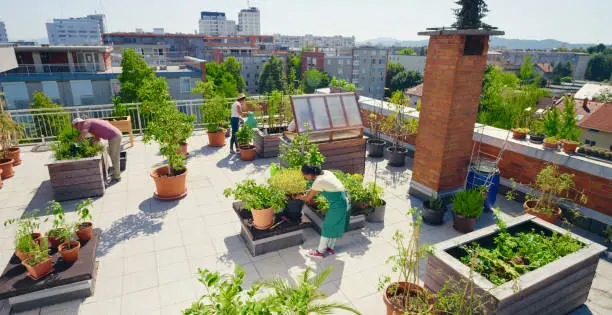
Evolving Consumer Behaviors in the Food Industry
Consumer preferences in 2025 are heavily influenced by health, sustainability, and convenience.
Transparency and conscious consumerism are now key drivers. People want to know where their food comes from, how it was produced, and its environmental impact. This has led businesses to prioritize clear labeling, ethical sourcing, and sustainable packaging.
Home farming kits have become increasingly popular, allowing individuals to grow their own herbs and vegetables effortlessly. This trend not only promotes self-sufficiency but also reduces reliance on commercial food supply chains.
Innovation in gastronomy and packaging is also gaining momentum. Edible packaging, made from biodegradable materials, is helping reduce plastic waste. Meanwhile, molecular gastronomy techniques are pushing the boundaries of culinary creativity.
The rise of zero-waste food apps is reshaping how people consume food. These platforms connect consumers with restaurants and retailers offering surplus meals at discounted prices, effectively reducing food waste.
Additionally, ghost kitchens—commercial cooking spaces for delivery-only food businesses—are thriving. With lower overhead costs and a focus on online orders, these kitchens cater to the growing demand for convenient, high-quality food.
Regulatory Changes Impacting the Food Industry
As the food industry evolves, so do the regulations that govern it. 2025 is bringing about stricter policies aimed at improving food safety, sustainability, and transparency.
Enhanced food labeling laws are being enforced to provide clearer information on ingredients, allergens, and nutritional value. This move helps consumers make informed choices while holding food producers accountable.
Stricter food safety regulations are also on the rise. Businesses must now adopt proactive measures to prevent contamination and ensure resilience against climate-related challenges.
With the surge in food e-commerce, authorities are implementing new guidelines for online food businesses, including licensing requirements and hygiene standards.
Sustainable water usage policies are another key focus, with regulators encouraging water recycling and efficient irrigation techniques to reduce waste.
Finally, genetically engineered foods and novel food technologies are under scrutiny. Policymakers are working to balance safety, ethical considerations, and innovation to create a transparent and sustainable food system.

The Future of the Food Industry: Innovation, Sustainability, and Consumer Trends
As technology advances and environmental concerns take center stage, the food industry is undergoing a profound transformation. Emerging innovations in food production, sustainability efforts, health-conscious trends, shifting global trade policies, and evolving consumer preferences are shaping what and how we eat. This article explores the key drivers of change in the food sector and how businesses and consumers alike can prepare for the future.
Technological Advancements in the Food Industry
The food industry is at the forefront of a technological revolution, leveraging digital tools to enhance consumer experiences and streamline supply chains. The integration of mobile apps and AI-driven platforms is allowing consumers to make more informed choices, while food delivery services have expanded dining possibilities beyond traditional eat-in or take-out options.
One of the most exciting advancements is the use of augmented reality (AR) and virtual reality (VR) in food marketing and packaging. These technologies provide consumers with detailed insights into nutritional content, product origins, and environmental impact, fostering transparency and trust.
Artificial Intelligence (AI) is also revolutionizing the industry by analyzing consumer behavior and optimizing supply chains. AI-driven analytics enable companies to predict trends, manage inventory, and reduce food waste—boosting efficiency while lowering costs.
Another game-changing innovation is blockchain technology, which ensures food safety and traceability by recording every step of the supply chain. This fosters consumer confidence and enhances transparency, particularly for ethically sourced products.
Perhaps the most groundbreaking development is lab-grown or cultured food. Companies are now producing meat and dairy alternatives that replicate the taste and texture of animal products without the ethical and environmental concerns associated with livestock farming.
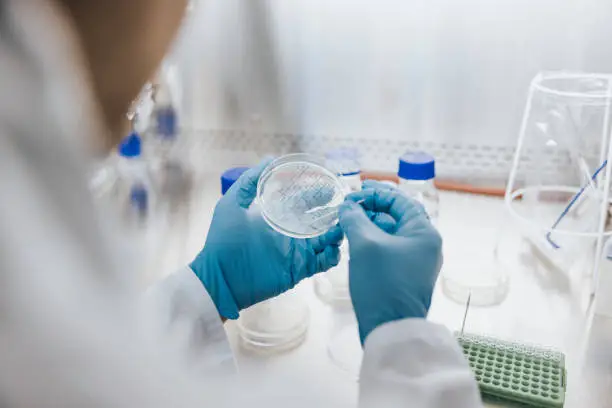
Sustainability and Ethical Sourcing
Sustainability is becoming a key priority for food industry leaders as consumers demand eco-friendly practices. One of the biggest challenges is food waste, which affects all levels of the supply chain. Companies are tackling this issue using IoT sensors and smart packaging to extend shelf life and monitor product freshness in real-time.
Sustainable agriculture is another focal point, with methods such as vertical farming, hydroponics, and regenerative agriculture gaining traction. These approaches minimize land and water use while ensuring year-round food production in urban settings.
The rise of plant-based food alternatives is reshaping the industry. Brands like Impossible Foods and Beyond Meat are leading the charge in providing meat substitutes that appeal to both vegetarians and meat-eaters alike. This trend aligns with consumer concerns about animal welfare, personal health, and the environment.
Another crucial shift is the move towards sustainable packaging. Companies are reducing their reliance on single-use plastics and investing in biodegradable, compostable, and edible packaging solutions.

Health-Focused Food Innovations
Consumers are prioritizing health and wellness more than ever, influencing food industry trends. Organic, fresh, and minimally processed foods are in high demand, with people seeking farm-to-table and locally sourced options.
Functional foods and nutraceuticals—products enriched with vitamins, probiotics, and antioxidants—are also on the rise. With growing awareness of preventive health, consumers are looking for foods that provide benefits beyond basic nutrition.
The industry is also seeing a surge in free-from foods—such as gluten-free, dairy-free, and GMO-free products—driven by health-conscious and allergy-sensitive consumers.
Transparency is another crucial factor. People want to know what’s in their food, where it comes from, and how it’s made. Blockchain technology and smart labels are helping provide this information at the consumer’s fingertips.
Impact of Global Trade Policies on the Food Industry
Global trade policies play a significant role in determining food availability, pricing, and sustainability practices. Trade agreements can either open markets and reduce costs or impose tariffs that make food products more expensive and less accessible.
Regulatory changes in import and export policies also affect food supply chains. Stricter biosecurity measures, for example, can lead to supply chain delays but also improve food safety and quality standards.

Sustainability requirements in trade policies are driving positive change. Many governments are now incentivizing eco-friendly farming practices, sustainable packaging, and reduced carbon emissions as part of international trade agreements.
The Future of Food Experiences and Consumer Trends
Modern consumers are more informed than ever, making choices based on sustainability, ethical sourcing, and health benefits. Local food sourcing is gaining popularity, as consumers prioritize freshness and environmental impact over convenience.
Cold storage advancements and optimized supply chains ensure fresher products reach consumers faster, reducing spoilage and waste. Meanwhile, scientific breakthroughs in food engineering—such as genetically modified (GM) crops designed for resilience—continue to spark debate about safety and long-term impacts.
Affordability remains a challenge in the sustainable food movement. While organic and eco-friendly options are gaining traction, their higher prices make them inaccessible to many. The industry must work towards making sustainable food solutions more affordable for all.
The push for sustainability is further strengthened by environmental regulations requiring waste reduction, responsible sourcing, and eco-conscious packaging. Companies investing in these initiatives not only help the planet but also enhance their brand image and appeal to conscious consumers.
Conclusion: The Future of Food in 2025 and Beyond
The food industry in 2025 is undergoing a profound transformation driven by technological advancements, sustainability initiatives, shifting consumer behaviors, and evolving regulations. From AI-powered food processing to plant-based nutrition and blockchain transparency, the industry is embracing innovation to meet global demands. Businesses that adapt to these changes will not only thrive but also contribute to a healthier, more sustainable future.

